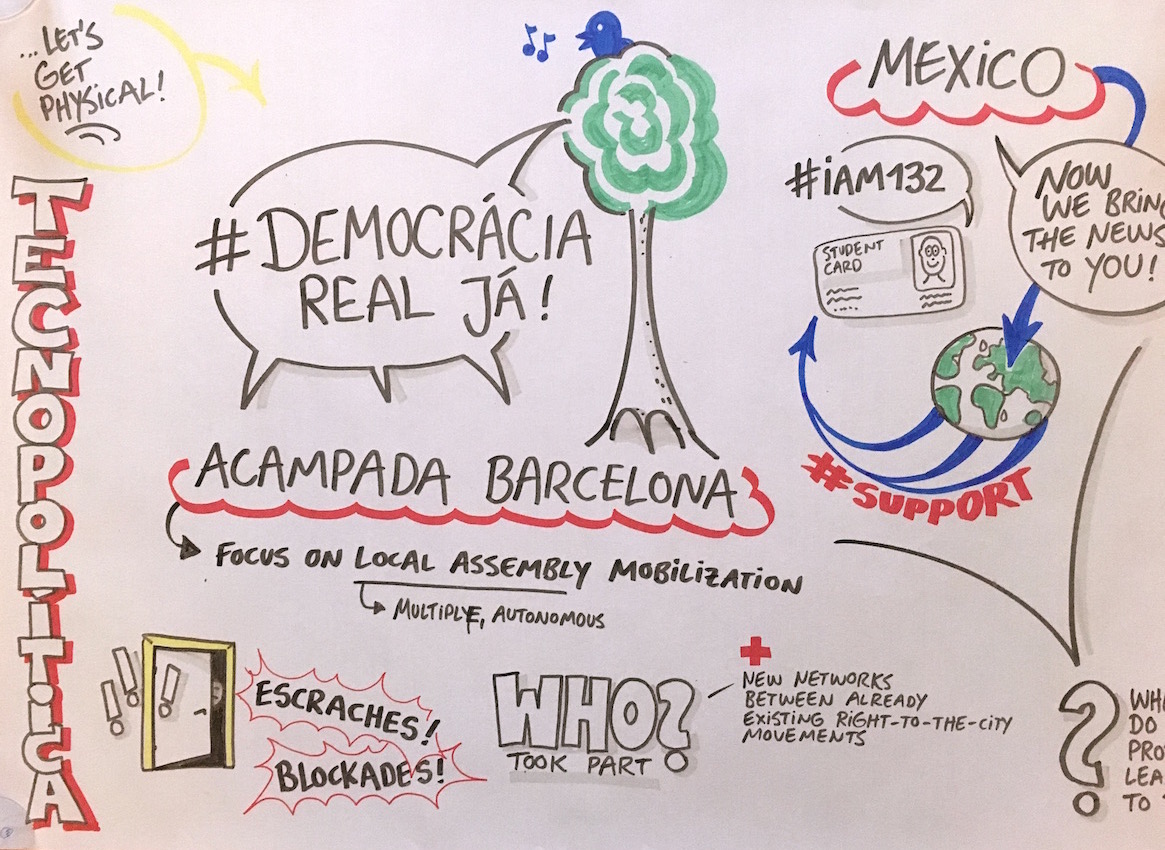DIGITAL TOOLS
Here comes a short list of digital tools, some recommendations of helpful software and platforms for creating, connecting, documenting and other tasks in urban/digital context.
During one of the workshop of the metroZones-school we were trying different tools and discussed our experiences with them. We used free and non-free software, commercial platforms and open networks. We experimented with possiblities of pseudonymous/anonymous usage, privacy settings, ease of use to tell stories or map our spatial context and how such tools enables or even foster collaborative work. This list here focuses on free software (check the free software foundation or Wikipedia for a definition, in short: these tools are »free as in free speech«!) and platforms, where we believe that they respect privacy and don’t have (direct) commercial interests. Their usage is free of costs, while probably all organizations involved would be happy for support, may it be a donation to cover their expenses or feedback on your user experience.
Collaborative Writing: EtherpadLite
Etherpad is a web-based editor, where contributors can write text together in real time. A tool for writing minutes, concepts, todo-lists, pamphlets and other collective text-creating efforts. There are several instances in the web, for example https://pad.riseup.net or https://www.piratenpad.de (watch out for Jetpad, a new variation of Etherpad that allows annotations and comments of the written text).
Creating Images: GIMP
GIMP is the abbreviation of GNU Image Manipulation Program and this says exactly what it is: a free software for creating and manipulating images on your desktop, be it Linux, Windows or Mac OS. Other helpful free tools would be Inkscape (illustrations and vector images), Scribus (layout) or LibreOffice (texts, presentations or table calculations).
Open Mapping: uMap
A web-based service of the french Openstreetmap community. It allows the quick and easy creation of custom web maps, enriched with vectors, markers and texts. Your map can be easily embedded in your website. http://wiki.openstreetmap.org/wiki/UMap gives an overview of current installations, tutorials and showcases
Direct Communication: Signal
For a secure way to text (SMS), to make voice and video calls on your smartphone, you can use Signal. There are apps for most smartphones (Android, iOS) and even a desktop client (via Chrome) with a strong end-to-end-encryption. It works as a replacement of the normal SMS client, but to non-Signal-users you still can send text messages via normal, unprotected channels like SMS or MMS.
Mutual Communication and Exchange:
Schleuder
If you use openPGP/GPG encryption (which is a great way to ensure privacy for your emails), you know the difficulties of using this technique in group communications and you’ve probably missed this feature for mailing lists. Schleuder promises relief, it offers mailing lists with GPG backed encryption. It is free software that can be installed on Linux servers.
Riot
A different, maybe complementary approach provides Riot, a web-based service that works as a collective chat room. It has also end-to-end-encryption and the underlying framework is open source. Additionally it offers different »bridges« to connect other tools and services (like IRC/Jabber). It’s a good way to support ad-hoc working groups with an own communication channel.
The list is of course neither sufficient nor complete. For more tips, check for example the website »Digital tools for info-activists« at: https://howto.informationactivism.org
